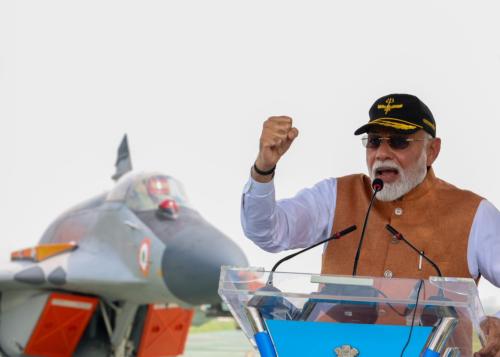Reports that Hakimullah Mehsud, the leader of the Pakistani Taliban, has died from wounds inflicted in a CIA drone attack are welcome if true. But his demise is unlikely to significantly disrupt the Taliban’s operations. Since its birth just a few years ago the Pakistani Taliban has rapidly developed and matured into a formidable terror network reaching across the country. There may be some confusion at the top in replacing Hakimullah, but it will not deal the terror gang a mortal blow.
Hakimullah took control of the group just last August when his predecessor Baitullah Mehsud was killed in another CIA strike. For Americans Hakimullah’s infamy was assured by his role in sending a Jordanian triple agent into a CIA forward operating base in Afghanistan on December 30, 2009. Al Khurasani, as he is known in his al-Qaeda nom de guerre, blew up the base, killing more CIA officers in one attack than any terrorist since an attack in Beirut in 1983.
For Pakistanis, the Taliban has been even more devastating. According to a Pakistani think tank, over 25,000 Pakistanis were killed or wounded in terror-related violence last year. Around 5,000 were killed or wounded in suicide bombings linked to the Taliban. The Pakistani army’s two offensives against the Taliban, first in the Swat valley last summer and then in south Waziristan this fall, have so stretched the army’s resources that it told Secretary of Defense Bob Gates last month that it will not be able to conduct another large-scale offensive against the Taliban for at least six and probably twelve months.
The Taliban has expanded far beyond its roots in the tribal areas of the Afghan border in just a few years. It has conducted attacks from Kashmir in the north to Karachi in the south. It still recruits most effectively in the Pashtun tribes, but it has also developed extensive support in the Punjabi heart of the nation. It has demonstrated an uncanny ability to strike deep inside some of the most fortified secure zones of the country, including Rawalpindi, the nations’ military capital.
The group has also moved ever closer towards al-Qaeda. Khurasani’s attack was trumpeted in an al-Qaeda statement days after he struck, with the terror group saying his martyrdom was retaliation for CIA missions that had killed Baitullah and two al-Qaeda leaders. Hakimullah appeared in a video with Khurasni to underscore their close alliance.
The Taliban’s goal is to disrupt Pakistani society so as to make the country ungovernable, hoping that chaos will lead to a jihadist takeover. Their immediate objective appears to be to destabilize the country’s largest port, Karachi, by provoking ethnic and sectarian violence between the city’s various communities. Violence in Karachi directly threatens the NATO mission in Afghanistan as well, since more than three quarters of NATO’s supplies arrive via Karachi.
So Mehsud’s passing is merely a battle victory. Although his death may temporarily offset the momentum of the Pakistani Taliban, make no mistake, there are a hundred more Mehsud’s waiting in the shadows. The war is far from being decided.
The Brookings Institution is committed to quality, independence, and impact.
We are supported by a diverse array of funders. In line with our values and policies, each Brookings publication represents the sole views of its author(s).



Commentary
Op-edDown, But Not Out
February 1, 2010